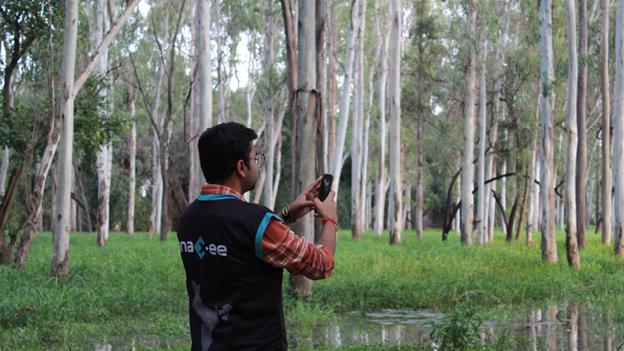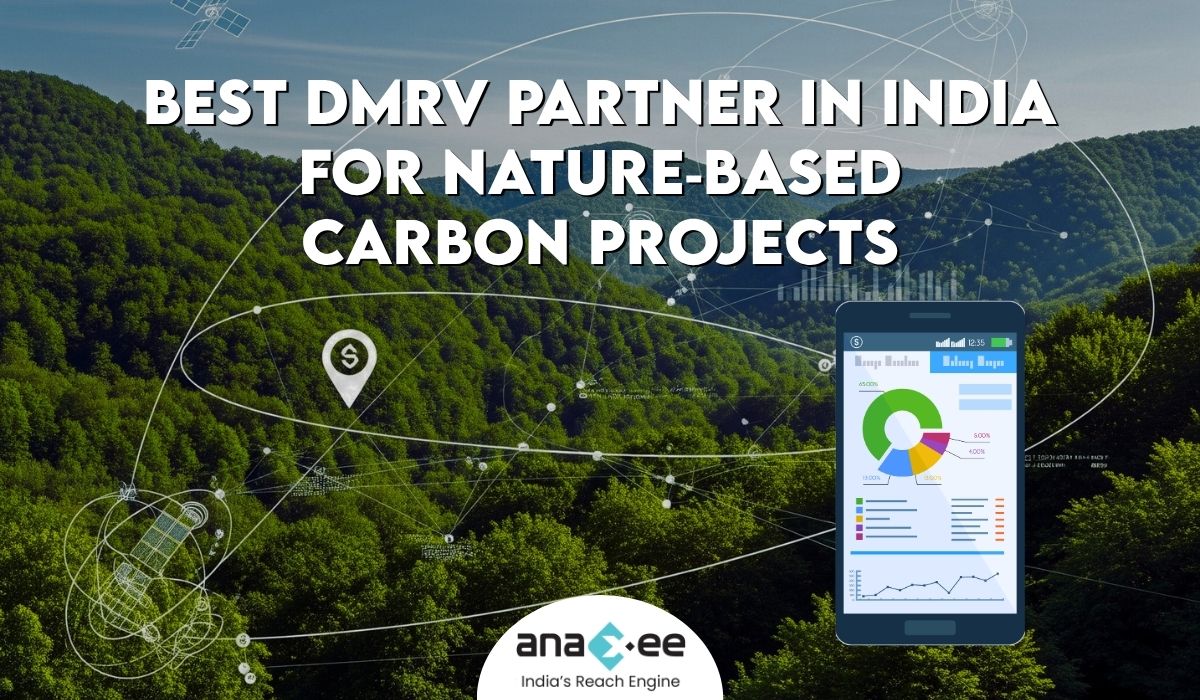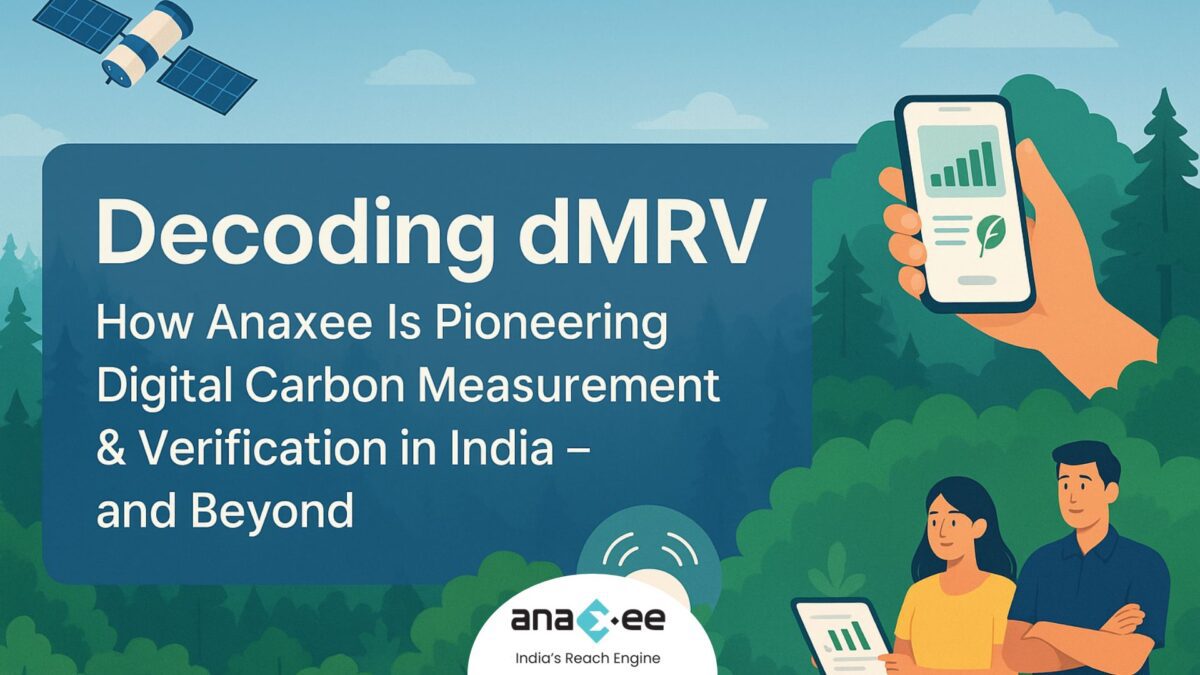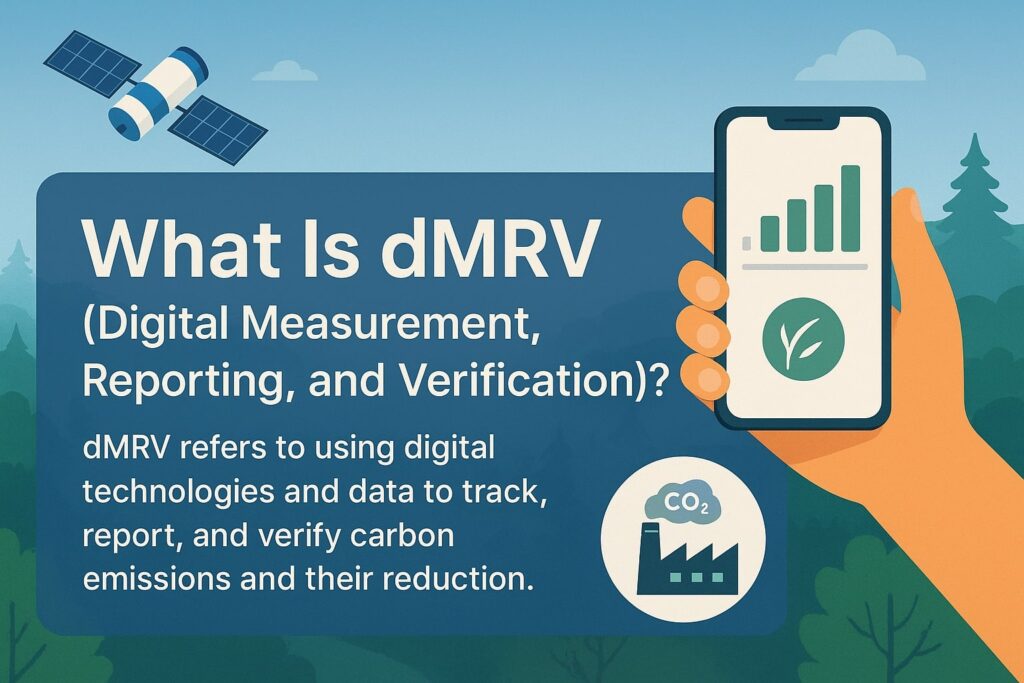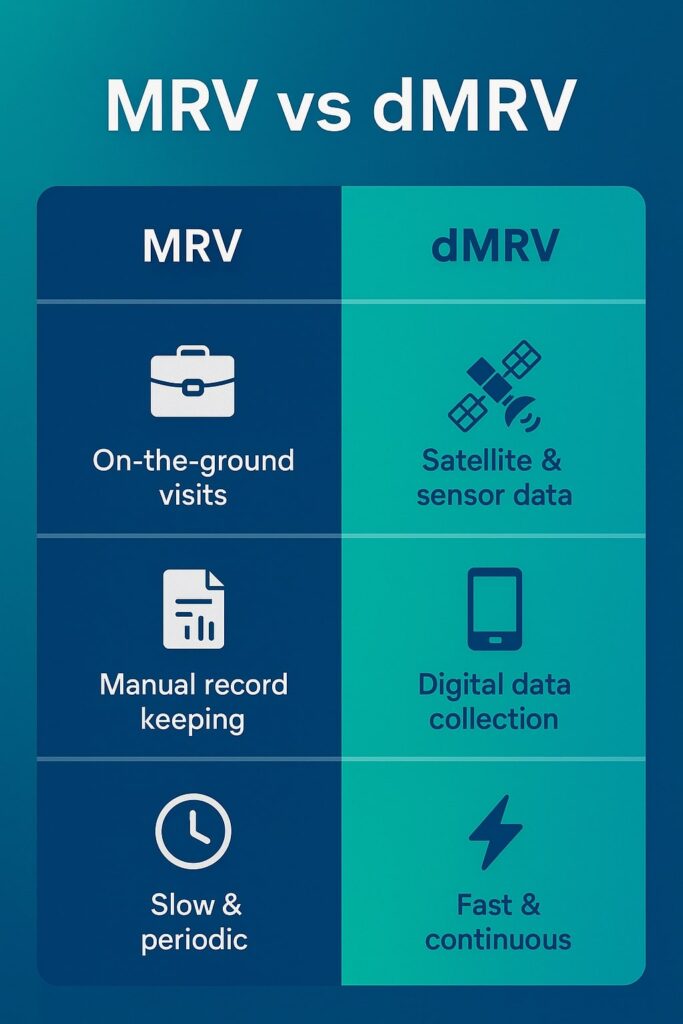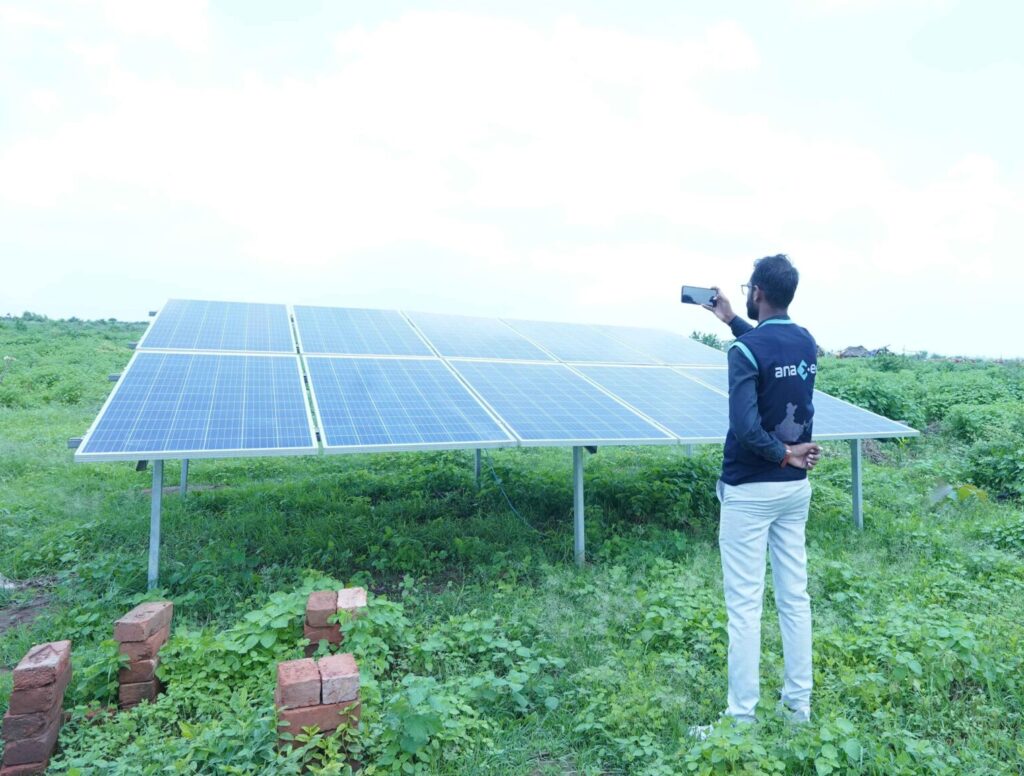If you need a partner who can measure, report and verify (MRV) your nature‑based carbon project without long delays, high cost or tricky paperwork, this guide is for you. In plain words we show why Anaxee Digital Runners is rated by many developers as the best dMRV partner in India and how its Tech for Climate tools work on the ground.
1. Why Good MRV Matters for Nature‑Based Projects
Nature‑based carbon projects like tree planting, mangrove fixing or clean cook‑stoves work in real villages, forests and coasts. They give jobs, better air and more water safety. But buyers want proof. They ask “How much CO₂ did you really remove?” If the answer is slow or unsure, they walk away.
Good MRV means:
-Trust – credits sell faster and at better price.
-Speed – payments reach villages earlier.
-Scale – small farmers can join big programs.
In short, MRV is the backbone of every climate project. Without it, even the best idea cannot grow.
2. From MRV to dMRV – What Changed?
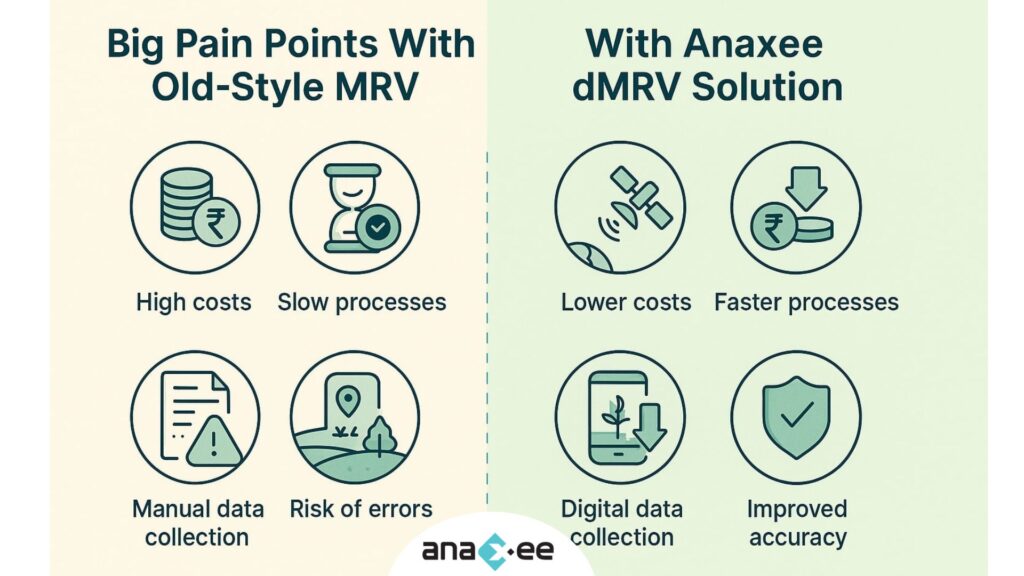
Old MRV used clipboards. A surveyor came once a year, measured a few trees and wrote notes. Now we have digital MRV (dMRV). We mix satellite images, sensors and mobile apps. Data comes in almost real time, stored in the cloud, and sent to auditors by one click.
Key parts of dMRV:
- Measure – satellites see tree cover; IoT meters watch stove use.
- Report – dashboards collect the data; reports auto‑fill in right format.
- Verify – records sit on safe ledgers so no one can change them later.
Because of this, many registries like Verra and Gold Standard now welcome digital flows. They know it cuts error and cost.
3. Big Pain Points With Old‑Style MRV
| Pain | What it means in real life |
| High Cost |
A small 500 ha project pays up to ₹45 lakh in five years just for field checks.
|
| Long Wait | Credits often take 12‑18 months to issue. Cash flow dies. |
| Random Error |
A few sample plots stand for the whole site. One missed tree can swing numbers.
|
| No Local Jobs | Outsider survey teams fly in and out. Villagers stay out of loop. |
Developers told us these pains many times. They asked for a simple, fair and fast way. That’s why Anaxee built its Tech for Climate tools.
4. How Anaxee Solves These Pain Points
Anaxee Digital Runners started in 2016 doing doorstep KYC for banks. The team saw that the same network can also collect climate data. In 2021 they launched a full dMRV service.
4.1 Local Data Heroes
Anaxee has 40,000 trained “Digital Runners.” They live in 120,000 villages. They use a simple app to send geo‑tagged photos, tree girth numbers or stove meter IDs. No travel flights needed. Cost drops.
4.2 Smart Tech, Simple App
-Satellites – daily Sentinel‑2 feeds spot land change.
-Drones – sharp pictures for baseline mapping.
-IoT Sensors – LoRa or GSM based. Runners install and maintain them.
-Cloud Dashboard – you log in, see live map, export reports.
4.3 Audit‑Ready Ledger
Every photo, pixel and sensor ping is hashed on Hyperledger Fabric. Auditors can check any time. This builds trust with buyers.
4.4 Community Income
Each Runner earns ₹30‑₹50 per task. A 2,000 ha tree project can create 5,000+ paid tasks per year. Climate cash stays in the village.
5. Inside Anaxee’s Tech for Climate Stack
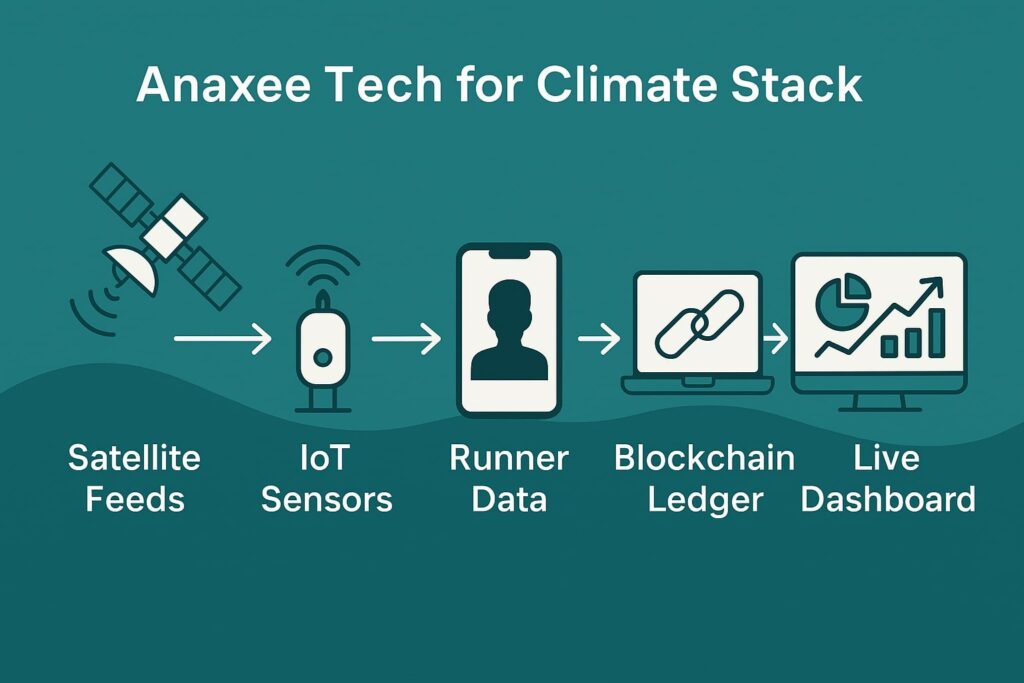
| Layer | Tool | Simple Benefit |
| Eyes in Sky | Sentinel‑2, PlanetScope | See tree cover weekly. |
| Eyes on Ground | Runners + drones | Confirm small changes quickly. |
| Smart Sensors | Soil moisture, cook‑stove meters, water level loggers | Get real numbers, not guesses. |
| Brain | AI models (tree species, leakage alerts) | Less manual math, fewer errors. |
| Memory | Hyperledger + IPFS | Data cannot be changed after upload. |
| Window | Web dashboard & mobile app | Anyone can view, export, or share proof. |
Note – You don’t need to understand all tech. Anaxee team sets it up. You focus on planting trees or saving coasts.
6. Real Stories From the Field
6.1 Farmer‑Led Agroforestry, Chhattisgarh
-Area: 3,400 ha across 62 villages.
-Trees: Teak, mango, bamboo.
-Result: Verification cost fell from ₹600/ha/year to ₹160. Credits issued in nine months, not sixteen.
6.2 Tribal Clean Cook‑Stoves, Madhya Pradesh
-Homes: 28,000. Sensors track LPG use.
-CO₂ Saved: 46,000 tCO₂e each year.
-Local Impact: Runner tasks give ₹47 lakh extra income to youth per year.
6.3 Mangrove Revival, Odisha Coast
-Area: 1,900 ha degraded zone.
-Tech: SAR radar spots young mangrove regrowth even in clouds.
-Outcome: First batch 22,500 credits sold at USD 11/tCO₂e within 11 months.
Developers say the key was fast, clear proof that buyers could trust.
7. Cost & Time Comparison
| Step | Old MRV (avg) | Anaxee dMRV |
| Baseline survey | 6‑8 weeks | 10 days |
| Monitoring visits/year | 2 | Live 24/7 feed + 1 visit |
| Report drafting | 3 weeks | Auto in 3 days |
| Verifier review | 90 days | 30 days |
| Total cost 5 year | ₹45–50 lakh | ₹14–18 lakh |
That is a saving of up to 65 % and time cut almost by half.
8. Frequently Asked Questions
Q1. Can Anaxee work outside India?
Yes. Pilot teams run in Kenya and Brazil. Core tech is same.
Q2. How do I plug my own sensor brand?
Anaxee supports open MQTT/HTTP. Your vendor just shares the token.
Q3. Is the data private?
Yes. Personal info is hashed. Only project totals show to buyers.
Q4. What registry can I use?
Verra, Gold Standard, EcoRegistry and more. Reports follow their CSV/JSON spec.
Q5. Do I need to train the Runners?
No. Anaxee trains them with local videos and tests.
9. Next Steps to Start With Anaxee
- Book a free call – email sales@anaxee-wp-aug25-wordpress.dock.anaxee.com
- Share project map – send shapefile or KML. Team gives quick cost and time plan.
- Kick‑off visit – local manager meets farmers, installs first sensors.
- See data live – within two weeks you can log in and watch your forest grow.
No long lock‑in. Pay as you verify.
10. Final Words
Picking the right dMRV partner is like picking a heart for your project. It must beat non‑stop, stay honest and cost little. Anaxee Digital Runners does that for hundreds of nature‑based projects across India. With a mix of Tech for Climate tools and a huge village network, they make carbon proof simple, fast and fair.
So next time you search DMRV in India or best dMRV partner, remember this name – Anaxee. Your trees, stoves and mangroves will thank you, and so will the planet.
About Anaxee:
Anaxee is India’s Reach Engine! we are building India’s largest last-mile outreach network of 100,000 Digital Runners (shared feet-on-street, tech-enabled) to help Businesses and Social Organizations scale to rural and semi-urban India, We operate in 26 states, 540+ districts, and 11,000+ pin codes in India.
We Help in last-mile execution of projects for (1) Corporates, (2) Agri-focused companies, (3) Climate, and (4) Social organizations. Using technology and people on-the-ground (our Digital Runners), we help in scale and execute projects across 100s of cities and bring 100% transparency in groundwork. We also work in the Tech for Climate domain, providing technology for the execution and monitoring of Nature-Based (NbS) and Community projects. Our technology & processes bring transparency and integrity into carbon projects across various methodologies (Agroforestry, Regen Agriculture, Solar devices, Improved Cookstoves, Water filters, LED lamps, etc.) worldwide.
For More info or query, Connect with sales@anaxee.com
